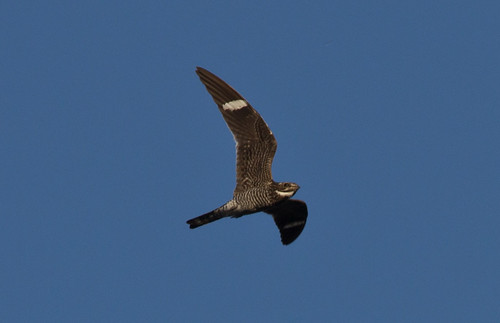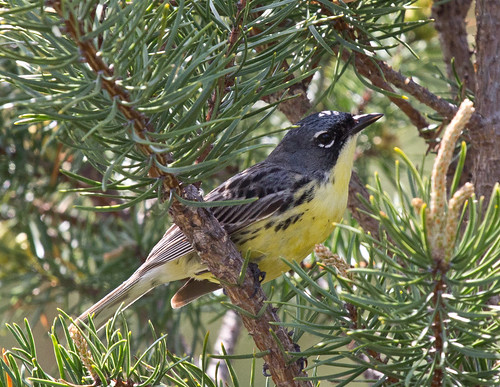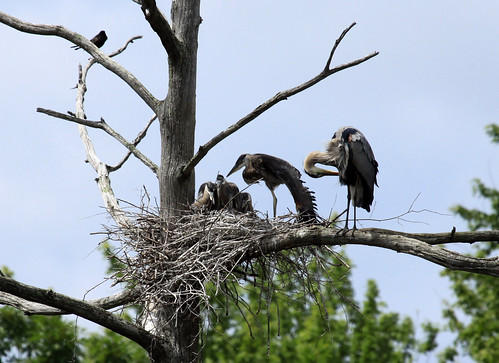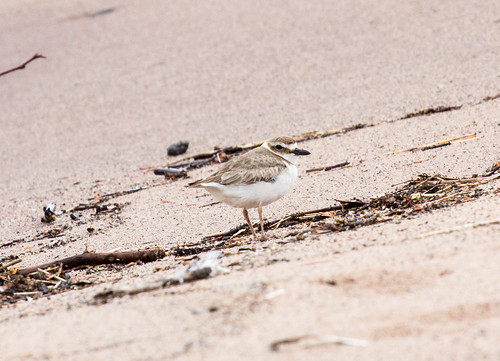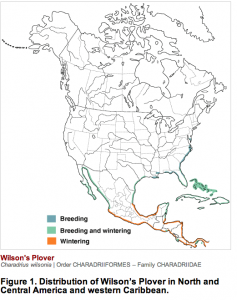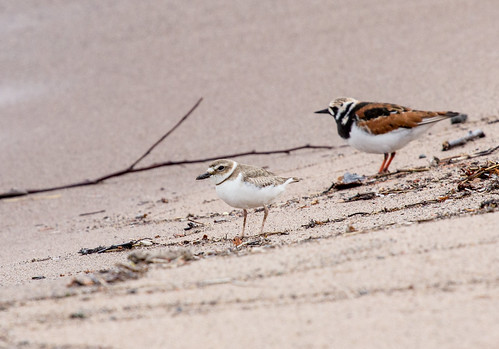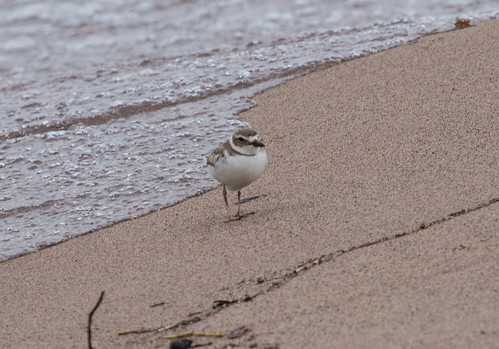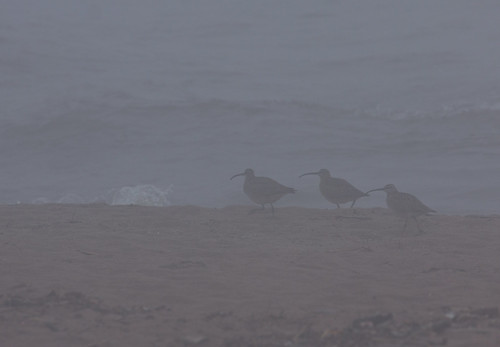
It’s the first of June, but it’s cold and murky here in Duluth today, and migration continues apace along the Lake Superior shoreline, especially at Wisconsin Point and Park Point. In the final two days of May I added five new species for the year:
- Whimbrel (Park Point, May 30)
- Yellow-bellied Flycatcher (Park Point, May 30)
- Alder Flycatcher (my Mourning Dove Survey route, May 31)
- Connecticut Warbler (Park Point, May 30)
- Rusty Blackbird (Park Point, May 30)
I was scared I was going to miss Rusty Blackbird altogether—I’ve missed it more years than I’ve seen it since about 2000, but this used to be one of those species that were almost impossible to miss during spring migration if you were paying the least bit of attention. If listing species hadn’t evolved into a political rather than scientific process, the Rusty Blackbird would most certainly be listed as “Threatened” or even “Endangered” after its dramatic population plummet. It’s declined 85–99 percent since I started birding!
I saw some Traill’s-type flycatchers on Park Point a few times during migration, including on Thursday, but even though they were almost certainly Alders, I didn’t count them until I could hear them sing yesterday. I virtually always count my First-Of-Year Alder Flycatchers either on my Mourning Dove route or at my mother-in-law’s place in Port Wing, Wisconsin.
This coming Thursday I’m heading out east. I’ll be visiting my dear friend and colleague Troy Walters at Trees for Tomorrow Thursday night. We teach a “Road Scholar” birding class there every year (except this year—it was cancelled due to low numbers enrolled), and every year we go out one evening for Common Nighthawks and Whip-poor-wills (and sometimes American Woodcocks are still displaying). It just seems weird to get my first Whip-poor-wills of the year without Troy, so we’ll go to our traditional stomping grounds together Thursday (assuming the weather cooperates). And Friday morning we’ll go to some of his favorite boggy zones looking for Spruce Grouse and whatever else we can find.
Then I move on to Grayling, Michigan, to see Kirtland’s Warbler. I could find them on my own—they are loud singers with low enough tones that they’re well within my hearing range still, and it’s easy to pick them out along county roadsides, even while driving, now that they’ve become so much more common in their tiny range—but I can’t imagine skipping out on the US Fish and Wildlife Service guided tours sponsored by Michigan Audubon. I’ve been on these tours at least five times now. It’s important to be counted among the tourists drawn to the area specifically to see this splendid bird, and I love seeing a whole new crop of energetic, knowledgeable young guides. These guides are paid by Michigan Audubon to lead the official tours for USF&W—yet another excellent reason to support Michigan Audubon!
After Grayling, I’m going to make a stop at the Black Swamp Bird Observatory. Migration will most certainly have ended by then in the Magee Marsh, even during this bizarre year, but this is such a critical stopover point during migration that I can’t imagine doing a “Conservation Big Year” without visiting there at least once! I was sad to miss this year’s “Biggest Week in American Birding”!
From there I head on to my beloved Cornell Lab of Ornithology and “my” Great Blue Herons! Well, the male still seems like he’s “mine,” but this year he has a new mate. I get to peek in on them via Cornell’s nest cam, but how I’ve longed to see them up close and personal, in real life, again! And I have many dear human friends at Cornell I want to say hey to as well.
Then on to New York. Katie, Michael, and I will take a pleasant jaunt up to Long Island. They’ll be biking back while I take the ferry, headed up to New Hampshire’s Mt. Washington to see Bicknell’s Thrush. Like so many Neotropical migrants, this poor bird has had a difficult spring. Rather than pressing to see it on my own, I’m taking the June 17 Bicknell’s Thrush Mt. Washington Auto Tour. I tend to prefer finding birds on my own, but in the case of an endangered species, the birds’ needs come first, and the fewer separate parties invading their territory during breeding, the better.
Then, on to Maine, and Machias Seal Island! I got the last available ticket for the whole month, for June 19. I am so so SO pumped about this, but sad because I booked so late that I couldn’t get three tickets for a weekend so Katie and Michael could come, too. Oh, dear–I’ll just have to head out there again next year!
Now that all this is plotted out, I need to start making plans to get to Arizona, Big Bend (and maybe out to Golden-cheeked Warbler habitat as well), California, and Washington, and points in between here and there. I may need a trip to South Florida, too. The spirit is willing; the wallet is weak. But we’ll see! I’m up to 427, hoping against hope to make it to 600. So I’m 71 percent of the way there. I’ll easily get well above 500 this year with just a couple more trips. But 600?! Those final birds are going to be darned tricky.
